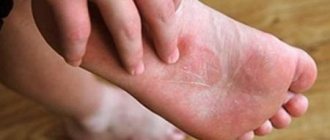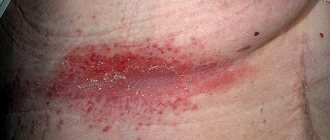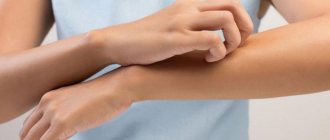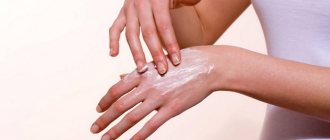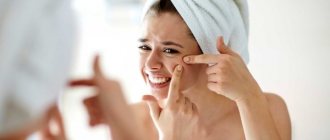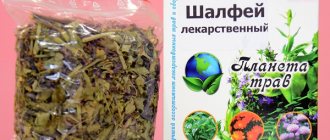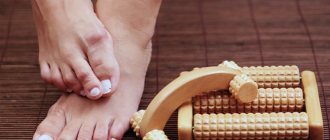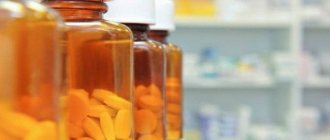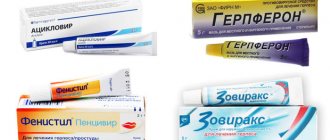An allergic reaction sometimes appears unexpectedly, and absolutely anything can provoke it. Most often, the disease manifests itself in the form of a red itchy rash on the epidermis. Antihistamines effectively fight the disease, but it is important to choose them correctly, based on many nuances. Skin allergy ointment relieves swelling, redness and other unpleasant symptoms in just a few applications. However, it is necessary to find out what caused the irritation and what to do in case of an allergy first.
Classification of skin allergy products by purpose
First of all, let's look at how ointments differ from creams and gels.
| The difference between ointment and cream and gel | |
| Ointment | The ointment contains a large number of active ingredients and has a hydrophobic base, which gives it a high fat content. The ointment penetrates deeply into the skin and acts directly on the lesion, but as a disadvantage, it leads to clogging of pores. |
| Cream | The cream has a lighter texture, thanks to which it can be absorbed faster and does not leave any marks on the skin or clothes. Due to its properties, it can be used more often than ointments and applied to large areas without causing inconvenience. |
| Gel | The gel has water as a base (hydrophilic base), thanks to which it spreads quickly and dries instantly. It forms a thin film on the skin, thanks to which it adheres, but unlike ointment, it does not contribute to clogging of pores. |
All of the above remedies cope well with the symptoms that appear with allergies, such as itching, redness, dryness, swelling. So let's figure out when to use ointment and when to use cream or gel.
The cream is used in the presence of a rash in the folds of the skin, because it is able to penetrate into hard-to-reach areas, but with prolonged use it leads to dry skin.
The ointment is used if there are weeping manifestations of the rash, irritation, and peeling. Due to slow absorption, the effect will not occur immediately.
The gel is used for atopic dermatitis, facial skin allergies, insect bites, and can be used for sun allergies. There are practically no disadvantages.
Below you will find the names of ointments for skin allergies, sorted by purpose for convenience.
List of creams and ointments effective for skin diseases
To treat eczema use:
- Dermasan,
- Skin cap,
- Hydrocortisone ointment,
- Prednisolone,
- Aurobin,
- Advantan,
- Soderm.
To treat allergic dermatitis use:
- Celestoderm B,
- Lorindens S.
To treat urticaria use:
- Elokom,
- Nezulin.
The following ointments will help with itching
- Beloderm,
- Psilo-Balm,
- Mesoderm,
- Iricar.
List of localization tools
The skin on different parts of the human body varies in sensitivity, so you should carefully choose the drug.
For allergies on the face
The skin here is thin and sensitive, so it is advisable to use non-hormonal ointments.
- Fenistil,
- Psilo-balm.
If your doctor has prescribed a hormonal medication, use it with extreme caution on sensitive areas.
An entire article on the portal is devoted to ointments for allergies on the face. In it you will find reviews of the best and most effective products with reviews. For children, more gentle means should be used. You can familiarize yourself with them in the article about allergy ointments for children.
for the eyes :
- Lorinden,
- Fucidin,
- Levomekol,
- Hydrocortisone.
They help cope with swelling and redness of the eyelids and do not leave an oily sheen. The products are usually applied to the skin around the eyes in a thin layer once a day.
For allergies on hands and feet
For reactions on the arms and legs, corticosteroid ointments are most often used.
- Flucinar,
- Advantan,
- Belosalik.
These drugs are applied to the skin 1-2 times a day.
Ointments for quick relief from allergies
Often an allergic reaction can appear in a short period of time. For example, after an insect bite or contact with certain plants.
Photo: Allergic reaction to a mosquito bite on the back
In this case, ointments for skin allergies can help, allowing you to completely remove allergy symptoms:
- Psilo-Balm,
- Fenistil,
- Nezulin.
Hormonal: Sinaflan, Advantan (use not often and with caution).
In addition, to get rid of itching, you can use local anesthetics containing lidocaine or novocaine.
Treatment of allergic rashes
What to do when redness and pimples appear on the face, how to get rid of severe itching? First of all, it is necessary to find out the reason that caused the histamine reaction and try to eliminate it. For example, if a rash develops after using the cream, you should stop using it. In case of intestinal disorders, it is necessary to take lactobacilli and enterosorbents as prescribed by a doctor.
Antihistamines help relieve itching and skin irritation. Preference should be given to drugs of the second and third generation, they have fewer side effects and last up to 24 hours. Medicines relieve bronchial spasm, reduce burning of the dermis, swelling, and normalize the condition of the capillaries.
Effective antihistamines:
- Cetirizine.
- Loratadine.
- Fexofenadine.
- Azelastine.
Tablets can be taken only after consulting a doctor or in emergency cases with the development of anaphylactic shock or Quincke's edema.
Ointments for external use
How to treat itchy rashes and wounds on the face? Pharmacy ointments help speed up skin healing, relieve redness and inflammation. Hormonal or non-hormonal drugs are used to treat allergic rashes.
The first group includes Sinaflan, Advantan, Gistan, Elokom, Hydrocortisone. These products quickly eliminate the symptoms of a histamine reaction, but they should be used for a short time and only on the recommendation of a dermatologist, since long-term use can cause the development of side effects.
Non-hormonal ointments dry out weeping elements, moisturize the skin, thereby reducing itching and pain, have a bactericidal effect, and accelerate the healing of pustular wounds. For the treatment of rashes on the face, ointments are most often prescribed: Levosin, Lorindeni A, Afloderm, Actovegin. Iricar and Mesoderm gel relieves itching and swelling well.
Non-hormonal ointments for skin allergies in adults
Non-hormonal ointments are best used to eliminate minor rashes (after insect bites, food allergies). They help soften the skin and heal cracks.
Pros:
- They have an antipruritic effect.
- Some drugs are allowed to be taken from birth, and most from 2 years of age.
- Most of them are harmless.
- May have anti-inflammatory, antifungal and antibacterial effects.
- Prevents relapse.
- Can be used by pregnant women and during lactation (only as prescribed by your doctor).
Minuses:
- in rare cases, individual intolerance
- slow action
Below you will find a brief description of the most popular ointments for skin allergies in adults. For each drug, the properties, method of use, possibility of use during pregnancy and breastfeeding, as well as the average price are indicated.
Antihistamines for skin allergies
When choosing ointments for skin allergies in adults, you should first pay attention to the antihistamines listed below.
First of all, they will help cope with itching and hyperemia.
Psilo-balm
| basic information | ||
| Mode of application | 3 times a day at a dose of 2-3 g The duration of the course is chosen by the doctor | |
| Additional effect | Local anesthetic and cooling effect | |
| Can it be used during pregnancy? | Used if the benefit is much greater than the risk to the fetus | |
| average cost | RUB 250.00 | |
Soventol
| basic information | ||
| Mode of application | Apply a thin layer to the affected skin, repeat after 30 minutes if necessary. | |
| Additional effect | Decongestant | |
| Can it be used during pregnancy? | Prescribed with caution | |
| average cost | ||
Fenistil
| basic information | ||
| Mode of application | 0.1 mg/kg body weight per day, Divide the daily dose into 3 doses | |
| Additional effect | Weak antiserotonin and antibradykinin effect | |
| Can it be used during pregnancy? | Contraindicated during pregnancy | |
| average cost | 350 rub. | |
Other ointments, creams and gels
Salicylic ointment
| basic information | ||
| Mode of application | Apply a thin layer and cover with a sterile bandage | |
| Additional effect | Keratolytic, antiseptic and anti-inflammatory | |
| Can it be used during pregnancy? | The dosage should not exceed 5 ml | |
| average cost | 25.00 RUR | |
Zinc ointment
| basic information | ||
| Mode of application | Apply to the skin, pre-treated with an antiseptic solution, 2-3 times a day. | |
| Additional effect | Adsorbent, drying, astringent | |
| Can it be used during pregnancy? | Can be used during pregnancy | |
| average cost | 31.00 RUR | |
Levomekol
| basic information | ||
| Mode of application | The drug is applied to gauze pads, which are applied to the damaged areas. | |
| Additional effect | Antimicrobial and anti-inflammatory effects | |
| Can it be used during pregnancy? | Can be used during pregnancy | |
| average cost | 109.00 RUR | |
Skin cap
| basic information | ||
| Mode of application | 2 times a day, 3-4 weeks | |
| Additional effect | Antimicrobial, antifungal and anti-inflammatory | |
| Can it be used during pregnancy? | Used if the benefits are greater than the possible harm to the child | |
| average cost | 797.00 RUR | |
Protopik
| basic information | ||
| Mode of application | Apply a thin layer to affected skin | |
| Additional effect | Anti-inflammatory | |
| Can it be used during pregnancy? | No evidence of safe or hazardous use, recommended only under medical supervision | |
| average cost | 1600.00 RUR | |
Elidel
| basic information | ||
| Mode of application | 2 times a day until symptoms disappear | |
| Additional effect | Anti-inflammatory | |
| Can it be used during pregnancy? | Should not be used during pregnancy | |
| average cost | 965.00 RUR | |
Healing accelerators
These drugs moisturize the skin and help healing. There are good ointments based on panthenol, lanolin, retinol and zinc, as well as with herbal ingredients.
- Actovegin,
- Ointments and creams with a string,
- La Cree,
- Mustela,
- Boro Plus,
- Products with panthenol,
- With vitamin A – Radevit.
Bepanten
| basic information | ||
| Mode of application | 1-2 times a day, apply a thin layer of the product to the skin and rub in lightly. | |
| Additional effect | Healing effect | |
| Can it be used during pregnancy? | Can be used | |
| Price | 350 rub. | |
Analogs based on panthenol: D-Panthenol, Pantoderm.
Hormonal ointments for skin allergies in adults
These drugs contain corticosteroid hormones. They are used if other ointments do not have a therapeutic effect.
Hormonal ointments for skin allergies in adults effectively remove all signs of an allergic reaction, but at the same time they are actively absorbed into the blood and have a systemic effect on the body
It is highly advisable to use hormonal ointments for allergies only after consultation with a specialist.
If used rashly, they can lead to serious problems not only with the skin, but also with the body as a whole.
Pros:
- fast action;
- visible result.
Minuses:
- systemic effect on the body;
- possible side effects: the appearance of spider veins, temporary discoloration of the skin, atrophy of the skin at the site of application of the ointment;
- hormones affect the functioning of the adrenal glands;
- may cause hypertension;
- with long-term use after refusal, withdrawal syndrome occurs (the condition of the problem area will sharply worsen).
Hormonal ointments are classified according to the degree of activity, which is determined by its active ingredient and dosage. There are 4 main classes of these funds.
Class 1 – weak, short-term effect. The ointment slowly penetrates the skin.
Class 2 – moderate effect.
3rd grade – pretty fast action.
Class 4 – penetrates the skin as much as possible.
List of corticosteroid ointments and creams
Hydrocortisone ointment
| basic information | ||
| Mode of application | 1-3 times a day | |
| Additional effect | Anti-inflammatory | |
| Can it be used during pregnancy? | Only under the supervision of a doctor and if absolutely necessary | |
| average cost | 0.5% 3g costs 32.00 rub. | |
Gistan
| basic information | ||
| Mode of application | Course from 7 to 28 days | |
| Additional effect | Antipruritic and anti-inflammatory effects | |
| Can it be used during pregnancy? | The consequences of use have not been studied (use is not advisable) | |
| average cost | 166.00 RUR | |
Elokom
| basic information | ||
| Mode of application | 1 time per day on the affected area | |
| Additional effect | Antiexudative and anti-inflammatory | |
| Can it be used during pregnancy? | Safety of use has not been studied | |
| average cost | 185.00 RUR | |
Beloderm
| basic information | ||
| Mode of application | 2 times a day for 4 weeks | |
| Additional effect | Vasoconstrictor, antiproliferative, anti-inflammatory effect | |
| Can it be used during pregnancy? | Used if the benefits are greater than the possible harm to the child | |
| average cost | 128.00 RUR | |
Flucinar
| basic information | ||
| Mode of application | 2 g 1 or 2 times a day and no more than 1-2 weeks | |
| Additional effect |
| |
| Can it be used during pregnancy? | Prohibited up to 12 weeks, after possible short course | |
| average price | 266.00 RUR | |
Advantan
| basic information | ||
| Mode of application | Once a day course for children no more than 4 weeks, adults 12 weeks | |
| Additional effect | Anti-inflammatory effect | |
| Can it be used during pregnancy? | Not recommended for a long time | |
| average price | 530 rub. | |
Prednisolone
| basic information | ||
| Mode of application | Apply thin layers to the affected areas 2-3 times a day. | |
| Additional effect | Anti-inflammatory effect | |
| Can it be used during pregnancy? | Contraindicated during pregnancy | |
| average cost | 50 rub | |
Sinaflan
| basic information | ||
| Mode of application | The skin is pre-treated with an antiseptic. Apply a small amount of the product 2-3 times a day for 5-10 days. | |
| Additional effect | Antiexudative and anti-inflammatory | |
| Can it be used during pregnancy? | Do not use during pregnancy and breastfeeding | |
| average price | 20 – 65 rub. | |
Triderm
| basic information | ||
| Mode of application | Apply morning and evening to the affected area of skin. | |
| Additional effect |
| |
| Can it be used during pregnancy? | Used if the benefits are greater than the possible harm to the child | |
| average price | 450 rub. | |
In addition to those listed, you can also find:
- Afloderm,
- Dermovate,
- Cutivate.
Emollients – suitable for complex treatment of skin allergies
Emollients consist of fatty alcohols, acids, waxes, esters and fats of natural origin. Their action is associated with softening the skin, moisturizing, restoring the lipid layer, regulating the ion-water balance and relieving the inflammatory process.
These drugs are among the main ones in the treatment of atopic dermatitis.
Pros:
- harmless
- effectiveness in the treatment of atopic dermatitis
- easy to use
- improves the properties of the skin, reduces the risk of complications
Minuses:
- can lead to acne due to clogged pores
- under their influence the skin regenerates more slowly
List of drugs
- Topicrem,
- Mustela,
- Sanosan,
- Weleda,
- Peach oil,
- Emolium.
Cheap ointments for skin allergies
A higher price is not always an indicator of greater effectiveness of the drug, but, nevertheless, it is worth paying attention to it. Imported medicines are traditionally more expensive than domestic ones. This is due not only to additional transport and other costs during delivery, but also to a generally higher technological level of production.
It is worth noting that this is not always necessary and if allergy symptoms do not manifest themselves severely, you do not have any special indications for treatment, it is quite rational not to overpay for a brand or an expensive modern active ingredient. You can use time-tested, domestically produced drugs, of course, if your doctor allows you to use them.
Among the inexpensive ointments, the following can be noted:
Hydrocortisone ointment, Sinaflan, Akriderm, the cost of which is no more than 100 rubles.
First aid for allergies at home
Allergy is an insidious disease that can appear at any time. Therefore, allergy sufferers themselves and their loved ones try to always be on alert and keep a supply of emergency medications in their home medicine cabinet. But if only it were possible to predict all possible situations! It often happens that completely unprepared people find themselves next to a person who has developed some dangerous allergic symptom. But timely and correctly provided first aid for allergies can save a person’s life.
Allergy symptoms in which you should definitely call an ambulance or immediately contact a medical facility:
- - breathing problems, shortness of breath;
- - spasms in the throat, a feeling of closing the airways;
- - nausea and vomiting;
- - stomach ache;
- - hoarseness, problems with speech;
- - swelling, redness, itching of large areas of the body;
- - weakness, severe dizziness, feeling of anxiety;
- - increased heart rate and palpitations;
- - loss of consciousness.
Proper treatment of skin allergies
Taking into account the peculiarity of the manifestation of skin allergies, it is necessary to combine treatment methods that will ensure an impact on all links in the pathogenesis that cause the allergy.
Treatment for skin manifestations includes:
- Diet. The peculiarity of the diet is the exclusion of products belonging to the group of allergens: coffee, chocolate, citrus fruits, strawberries, additives of group “E”, etc.
- Avoid any contact with pollen or dust allergens.
- Etiotropic and pathogenetic treatment . The essence of this method is to influence the very mechanism of development of the pathological process. For this form of treatment, the following are used: tablets, syrups and injection solutions.
- Symptomatic treatment . This treatment successfully eliminates the consequences of allergies: rash, redness and itching. Most often, ointments, gels, creams, and powders are used for skin allergies. Their effect is local and to achieve a better result they need to be combined with other treatment methods.
- They can also use emollients and homeopathic remedies (Sulfur 6, Antimonium crudum 3.6 Dulcamara 4.3).
In folk medicine, herbal decoctions are used to treat allergies, used in the form of lotions and baths. A complex combination of traditional medicine and traditional methods of treatment leads to a more accelerated positive therapeutic effect.
Urticaria and contact dermatitis are treated with baths with the addition of herbs:
- calendula,
- Jerusalem artichoke leaves,
- strings,
- daisies.
Baths with a decoction of bay leaves are popular, after which the affected area of the skin should be treated with zinc ointment.
What are the contraindications?
Allergy ointments are contraindicated for those who have an individual intolerance to any of the components included in the drug.
Not all drugs are approved for children, especially premature and low birth weight children.
Contraindications for hormonal ointments
- Pregnancy is a relative contraindication
- Skin infection by viruses (herpes, etc.)
- Open wounds
- Post-vaccination reactions
- Acne (acne)
- Mycoses (Fungal skin infections)
- Bacterial skin lesion
- Use with caution in children under 7 years of age
- Helminthiasis
Useful video: Can you be allergic to allergy ointment?
Main symptoms
The causes of an allergic reaction vary, but the symptoms in adults and children are almost always the same:
- swelling around the eyes, nose and lips. Even slight swelling indicates an allergic reaction;
- redness. Very often small red spots appear, which become more pronounced every day. Erythemas can often be in the form of fluid blisters;
- redness turns into severe peeling. Certain areas on the face have dead cells;
- the appearance of severe itching of varying intensity. Children are more susceptible to this symptom, and care must be taken that the child does not scratch the reddened areas;
- spots, pustules, small pimples that under no circumstances should be torn apart. Getting an infection can cause even greater consequences;
- Depending on the type of rash, weeping areas of the affected skin may form. Very often, such a rash can provoke chronic diseases, causing dermatitis and eczema on the face.
Types of facial allergies in children
Ointments for skin allergies in adults - reviews
Reviews of almost all drugs can now be found on the Internet. However, it is worth taking into account the individual characteristics of the body - what does not suit one patient may suit another. That is why it is highly desirable that adequate treatment be prescribed by the attending physician.
Patients respond positively to Gistan, saying that it is a very good remedy and it helps them with mosquito bites and allergic rashes. However, patients suffering from acne should not use it, as it may cause additional breakouts.
Consumers also note the effectiveness of Fenistil. Panthenol-based ointments - Bepanten Plus, Bepanten - are in great demand, especially among pregnant and lactating women.
Diagnostic methods
The patient is examined by a dermatologist and an allergist. At the initial stage, patients have elements of a primary rash; the presence of ulcers, crusts, and eczema is recorded, because the allergy occurs in a chronic or advanced form.
A prerequisite for effective treatment is an accurate determination of the cause of the allergic rash on the face. If a pseudo-allergy is suspected, internal organs are examined, primarily the stomach, liver, gallbladder, pancreas and thyroid gland. The doctor finds out whether there are metabolic disorders, foci of chronic bacterial infection in the body, and assesses the state of the immune system (immunogram).

